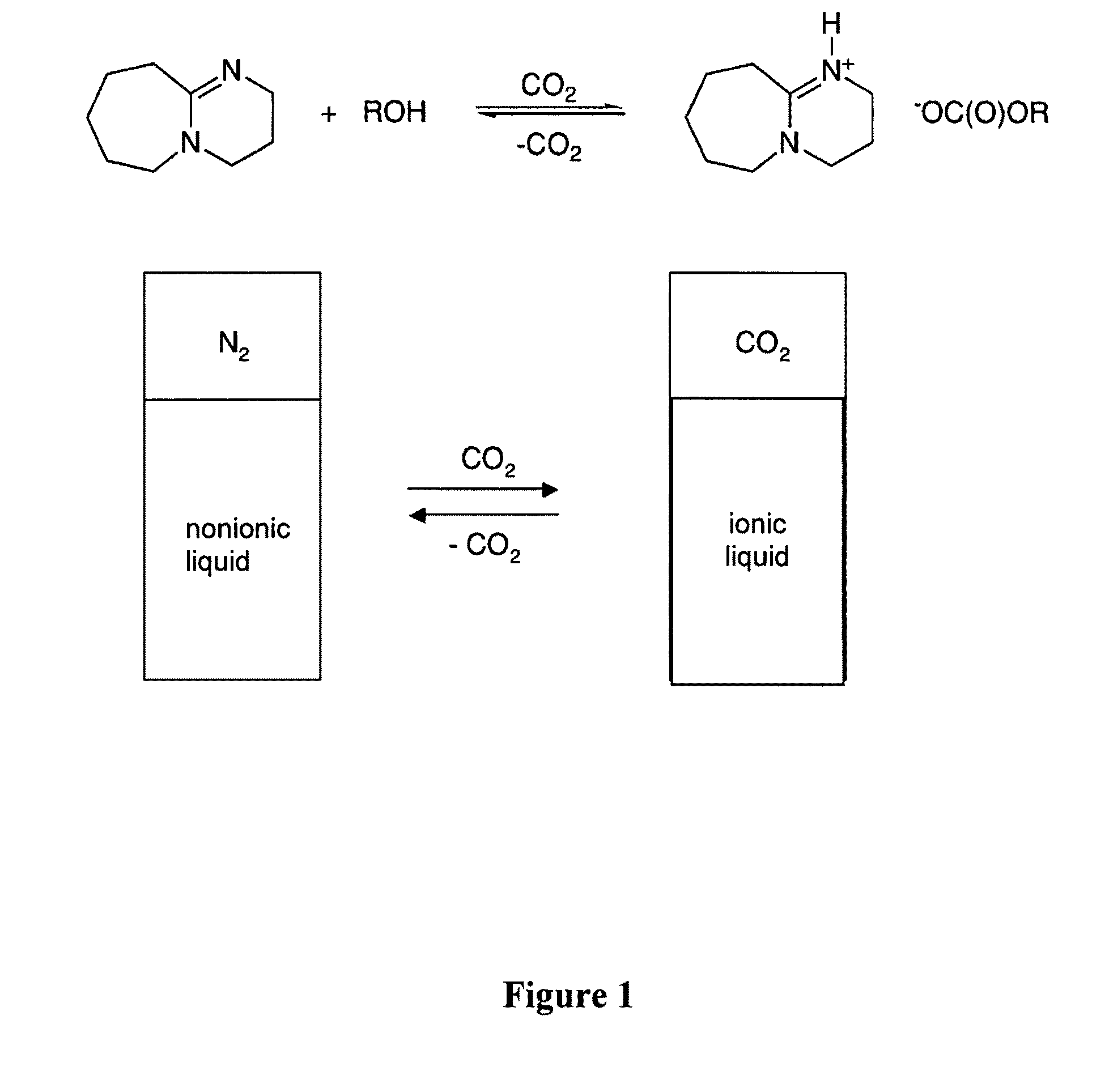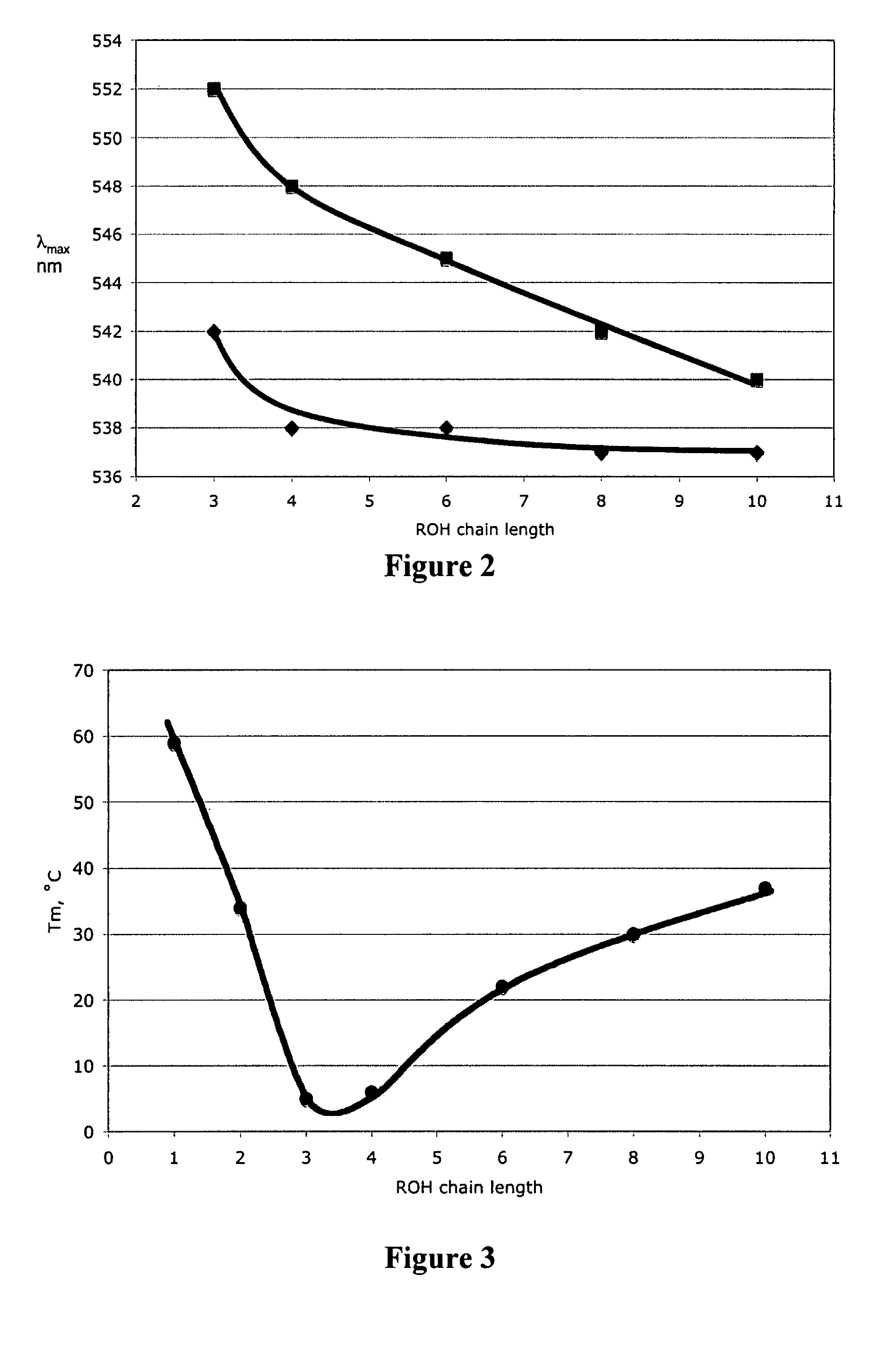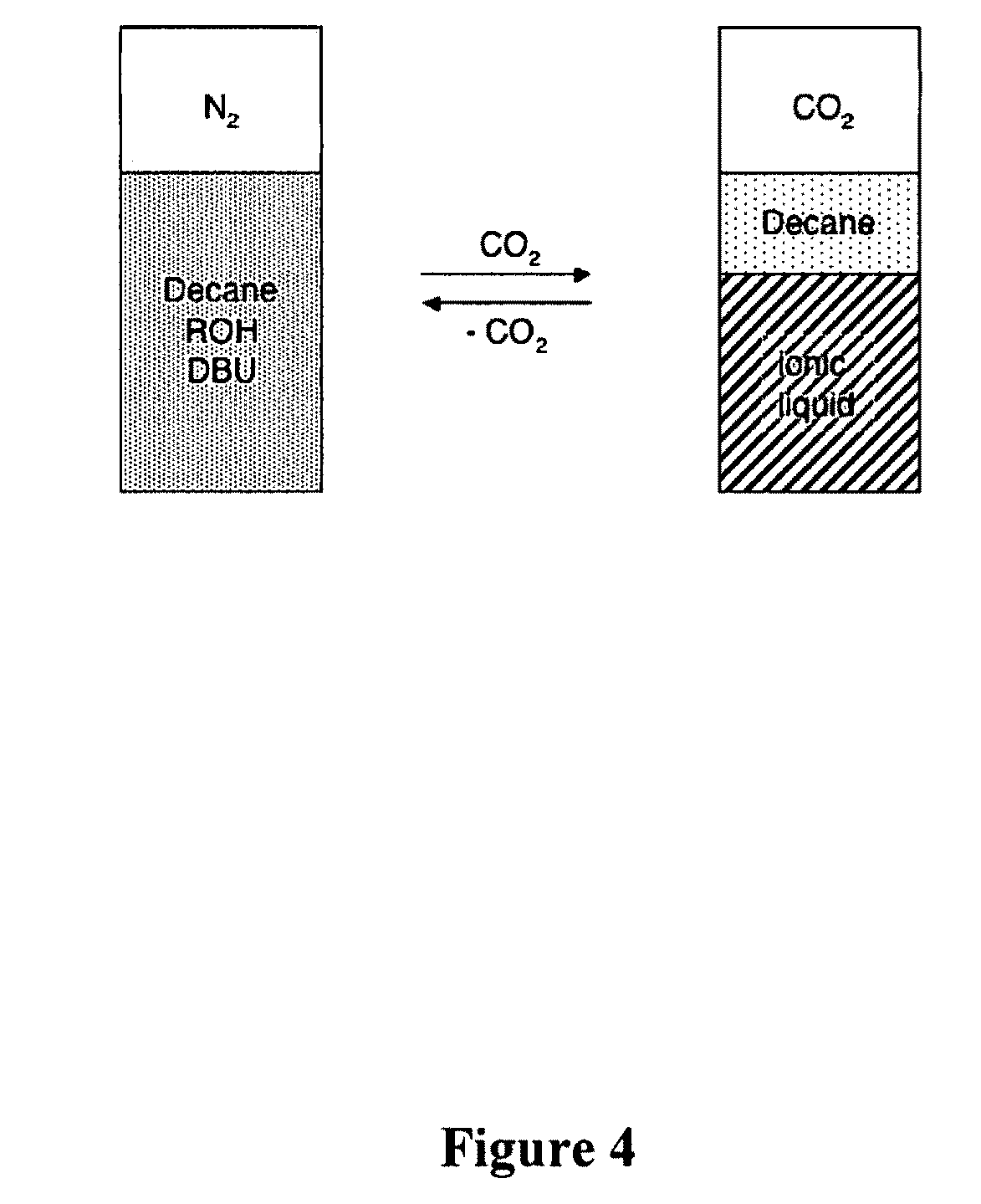Switchable solvents and methods of use thereof
a technology of switchable solvents and solvents, applied in the field of switches, can solve the problems of increasing the economic cost and environmental impact of such processes, limiting the use of switches as media for reactions and separations, and so as to achieve the effect of reducing the viscosity of mixtures
- Summary
- Abstract
- Description
- Claims
- Application Information
AI Technical Summary
Benefits of technology
Problems solved by technology
Method used
Image
Examples
working examples
[0205]DBU (Aldrich, Oakville, Ontario, Canada, 98% grade) was dried by refluxing over CaH2 and distilled under reduced pressure onto 4 Å molecular sieves and then deoxygenated by repeated freeze / vacuum / thaw cycles or by bubbling with carbon dioxide followed by filtration to remove any bicarbonate precipitate. Alcohols (99+%, anhydrous) were used as received from Aldrich. Decane (Aldrich, 99+% grade) was degassed with nitrogen prior to use. Hexanes (Fisher Scientific, HPLC grade) and toluene (Fisher Scientific, HPLC grade) were degassed and dried by passing them through an activated alumina column under nitrogen prior to use. Ethyl acetate (Fisher Scientific, HPLC grade) was degassed with nitrogen prior to use. Supercritical grade CO2 (99.999%, H2O2O2O<5 ppm) were used as received from Praxair Canada Inc., (Mississauga, Ontario, Canada).
example 1a
Reversible Solvent Switching in a DBU and 1-Hexanol System
[0206]Dried DBU (0.60 mL, 4.0 mmol, see FIG. 1) and 1-hexanol (0.50 mL, 4.0 mmol) were placed in a dry glass NMR (Nuclear Magnetic Resonance) tube in a glove box (Vacuum Atmospheres Company, Hawthorne, Calif.) under N2. Carbon dioxide was bubbled through the liquid via a hollow narrow-gauge stainless steel tube which was inserted in the solution within the NMR tube. The rate of bubbling was 2 bubbles per second for 1 hour. The liquid became increasingly viscous. The conductivity of a similar solution was measured using an immersible conductivity probe (Jenway, model 4071, available at Canadawide Scientific, Ottawa, Canada); it increased more than 20 fold. The 1H NMR spectrum of the resultant solution, although broadened due to the solution's viscosity, clearly indicated complete conversion to [DBUH][O2CO(CH2)5CH3] (where “DBUH” is protonated DBU) with no residual signals for free 1-hexanol or unprotonated DBU. The 1H NMR reso...
PUM
| Property | Measurement | Unit |
|---|---|---|
| pressure | aaaaa | aaaaa |
| pressure | aaaaa | aaaaa |
| temperature | aaaaa | aaaaa |
Abstract
Description
Claims
Application Information
 Login to View More
Login to View More - R&D
- Intellectual Property
- Life Sciences
- Materials
- Tech Scout
- Unparalleled Data Quality
- Higher Quality Content
- 60% Fewer Hallucinations
Browse by: Latest US Patents, China's latest patents, Technical Efficacy Thesaurus, Application Domain, Technology Topic, Popular Technical Reports.
© 2025 PatSnap. All rights reserved.Legal|Privacy policy|Modern Slavery Act Transparency Statement|Sitemap|About US| Contact US: help@patsnap.com



